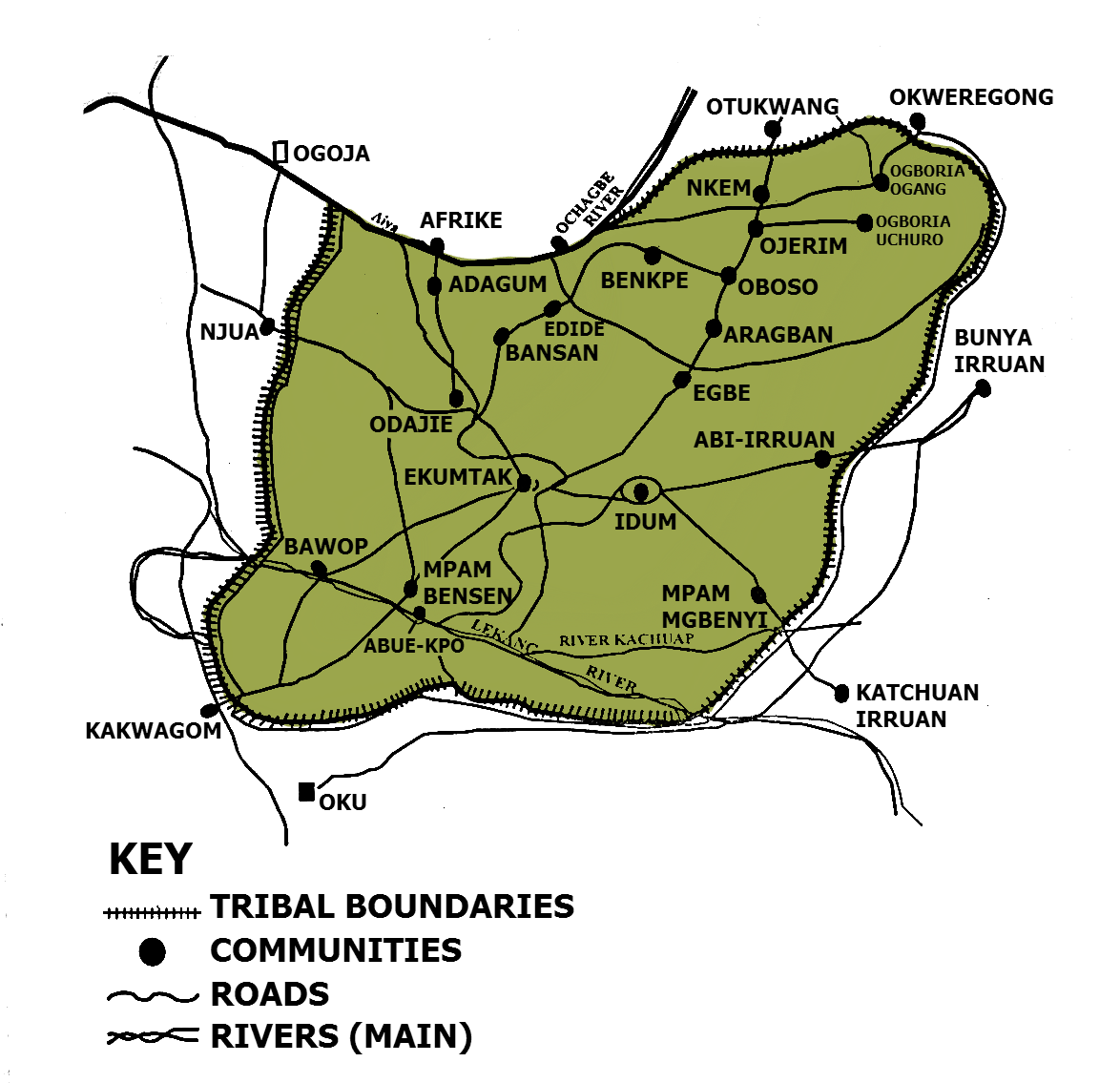About Mbube
The Place, The People, The Language
Quick Facts
Ogoja Local Government Area
Cross River State
Southeast Nigeria
Mbe

Geography
Mbube is an area within Ogoja, a Local Government Area in Cross River State, Nigeria. It lies south east of the main town of Ogoja.
Mbube is bounded on the east and south by the Irruan and Osokom tribes, on the north by the River Aiya and part of Obudu Division, and on the west by the Nkim and Osokom tribes. The whole area is a level land of once thick rainforest, with patches of grassland.
Two rivers span Mbube's area from west to east: River Aiya in the north, and Lekang River in the south.
Structure
Mbube is composed of 15 communities, having one central administration at Ekumtak. These communities can generally be divided into three sectors: Ketuen, Mbe-Afal (Mbube East), and the rest of Mbube. The Bawop people once made up a fourth section of Mbube. Bawop excised themselves after the Akilo Commission of Inquiry Report of late 1970 and joined the tribe of Boki/Bokyi.
The Ketuen section of Mbube is comprised of Idum, Ekumtak, and Odajie. They constitute the largest single community in Mbube. Each of the communities of Ketuen is composed of four to five Bekoh (plural form of Ekoh).
(in order of population)
- Idum Okwarr largestroyal
- Idum Batal
- Ekikenkpong
- Edegem
(in order of population)
- Obet largest
- Achigeh Agba Atem royal
- Achigeh Abuo Obiel
- Agaro
- Ekekeche
Odajie shares Bekoh with Ekumtak. Odajie and Ekumtak were once one, and to this day, they are still known by the common name "Ebuo". Odajie was established in 1910.
In Mbube, communities are divided into familial units. One of these units is called an Ndem (people of one grandfather). The people of an Ndem are male and female descendants of the same line. When a particular Ndem becomes so large that it becomes difficult to organize, it splits into multiple units, or Bendem (plural form of Ndem). This group of Bendem is referred to as an Ekoh, meaning "extended family".
Egbe is the traditional seat of Mbube both in customs and language. It was the traditional seat of punishment and justice in Mbube.
Ogberia is the next large community of Eastern Mbube. There are two sections of Ogberia: Ogberia Ogang, and Ogberia Uchoro. Though Ogberia people speak a dialect of Otukwang and have Lekuan as their resting day instead of Nguel, they have always been Mbube people.
The people of Ojerim were not originally of Mbube origin. Their first contact with the people of Mbube occurred when the Mbube people crossed the Aiya River to the grasslands. When the Mbube people later resettled on the other side of the Aiya River, the Ojerim people followed, after some conflict with the Bekwarra people. They now form one of the largest communities in Mbube East.
The community of Oboso is where the Ojerim people fled during their battle with the Bekwarra people. The decision to accept Ojerim into Mbube was made by Ela Apele, the ruler of Oboso at that time.
Like Us on Facebook
Contact Us
We are always open to receive any inquiries or feedback. Please feel free to drop us an email from the form below and we will get back to you as soon as we can.